Hyundai Tucson vs SEAT Leon – Differences & prices compared
Two cars, one duel: Hyundai Tucson meets SEAT Leon.
Which one wins in performance, efficiency and value for money? Find out now!
Costs and Efficiency:
Price and efficiency are key factors when choosing a car – and this is often where the real differences emerge.
SEAT Leon has a noticeable advantage in terms of price – it starts at 24500 £, while the Hyundai Tucson costs 30600 £. That’s a price difference of around 6180 £.
Fuel consumption also shows a difference: SEAT Leon manages with 0.30 L and is therefore significantly more efficient than the Hyundai Tucson with 1 L. The difference is about 0.70 L per 100 km.
As for range, the SEAT Leon performs clearly better – achieving up to 134 km, about 64 km more than the Hyundai Tucson.
Engine and Performance:
Power, torque and acceleration say a lot about how a car feels on the road. This is where you see which model delivers more driving dynamics.
When it comes to engine power, the SEAT Leon has a minimal edge – offering 272 HP compared to 252 HP. That’s roughly 20 HP more horsepower.
In acceleration from 0 to 100 km/h, the SEAT Leon is minimal quicker – completing the sprint in 7.70 s, while the Hyundai Tucson takes 7.90 s. That’s about 0.20 s faster.
In terms of top speed, the SEAT Leon performs somewhat better – reaching 220 km/h, while the Hyundai Tucson tops out at 194 km/h. The difference is around 26 km/h.
There’s also a difference in torque: Hyundai Tucson pulls slight stronger with 367 Nm compared to 360 Nm. That’s about 7 Nm difference.
Space and Everyday Use:
Cabin size, boot volume and payload all play a role in everyday practicality. Here, comfort and flexibility make the difference.
Both vehicles offer seating for 5 people.
In curb weight, SEAT Leon is slightly lighter – 1344 kg compared to 1520 kg. The difference is around 176 kg.
In terms of boot space, the Hyundai Tucson offers noticeable more room – 620 L compared to 380 L. That’s a difference of about 240 L.
In maximum load capacity, the Hyundai Tucson performs noticeable better – up to 1799 L, which is about 498 L more than the SEAT Leon.
When it comes to payload, Hyundai Tucson barely noticeable takes the win – 545 kg compared to 521 kg. That’s a difference of about 24 kg.
Who comes out on top?
Overall, the SEAT Leon shows itself to be is largely superior and secures the title of DriveDuel Champion.
It convinces with the more balanced overall package and proves to be the more versatile choice for everyday use.
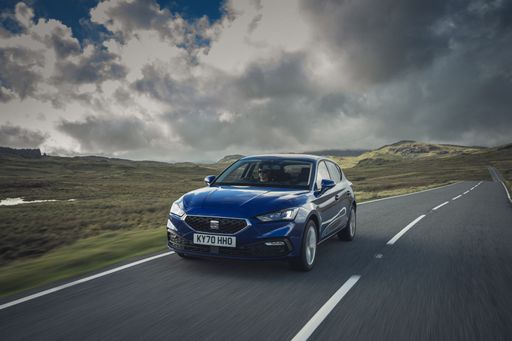
SEAT Leon
Hyundai Tucson
The Hyundai Tucson is a standout choice in the compact SUV segment, offering a perfect blend of style, comfort, and practicality. Its modern design is complemented by a spacious interior that provides ample room for passengers and luggage alike. With advanced technology and safety features, the Tucson ensures a smooth and enjoyable driving experience.
details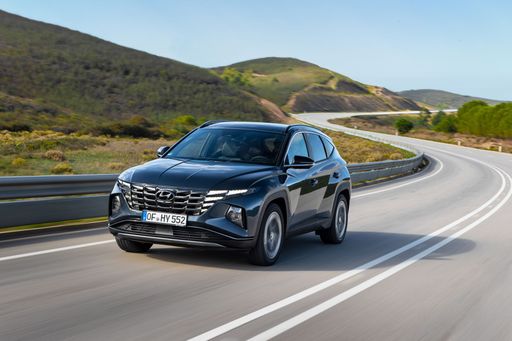 @ hyundai.news
@ hyundai.news
 @ hyundai.news
@ hyundai.news
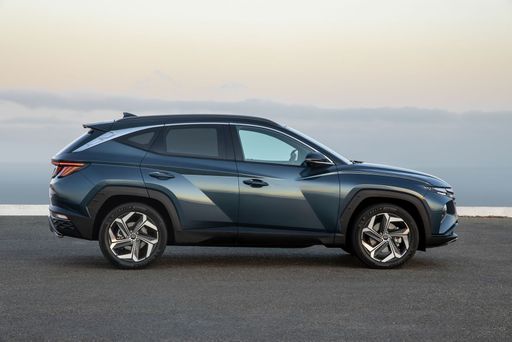 @ hyundai.news
@ hyundai.news
 @ hyundai.news
@ hyundai.news
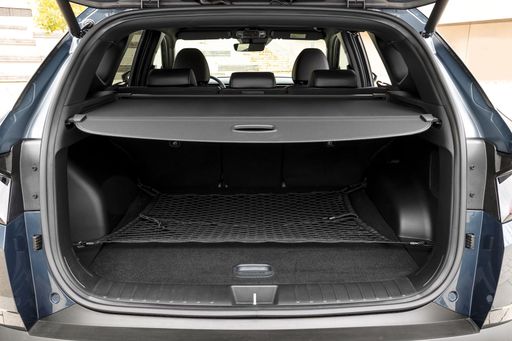 @ hyundai.news
@ hyundai.news
SEAT Leon
The SEAT Leon impresses with its dynamic design and sporty edge, making it a standout choice in its class. Its interior is characterised by a modern, driver-focused cockpit that combines functionality with an emphasis on comfort. The car delivers a responsive driving experience, thanks to its advanced engineering and agile handling capabilities.
details @ seatmedia
@ seatmedia
 @ seatmedia
@ seatmedia
 @ seatmedia
@ seatmedia
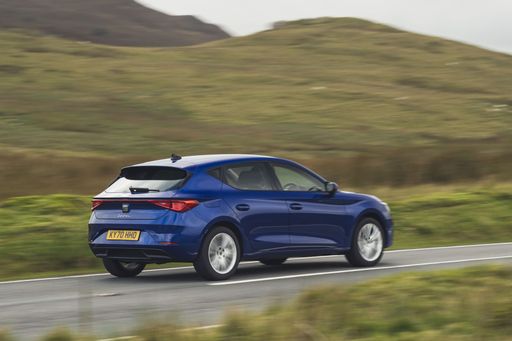 @ seatmedia
@ seatmedia

|

|
|
|
|
Costs and Consumption |
|
|---|---|
|
Price
30600 - 46300 £
|
Price
24500 - 36400 £
|
|
Consumption L/100km
1 - 6.9 L
|
Consumption L/100km
0.3 - 5.7 L
|
|
Consumption kWh/100km
-
|
Consumption kWh/100km
-
|
|
Electric Range
64 - 70 km
|
Electric Range
133 - 134 km
|
|
Battery Capacity
-
|
Battery Capacity
19.70 kWh
|
|
co2
22 - 156 g/km
|
co2
7 - 129 g/km
|
|
Fuel tank capacity
42 - 54 L
|
Fuel tank capacity
40 - 45 L
|
Dimensions and Body |
|
|---|---|
|
Body Type
SUV
|
Body Type
Hatchback
|
|
Seats
5
|
Seats
5
|
|
Doors
5
|
Doors
5
|
|
Curb weight
1520 - 1889 kg
|
Curb weight
1344 - 1670 kg
|
|
Trunk capacity
546 - 620 L
|
Trunk capacity
270 - 380 L
|
|
Length
4510 - 4520 mm
|
Length
4368 mm
|
|
Width
1865 mm
|
Width
1799 mm
|
|
Height
1650 mm
|
Height
1442 - 1460 mm
|
|
Max trunk capacity
1721 - 1799 L
|
Max trunk capacity
1187 - 1301 L
|
|
Payload
525 - 545 kg
|
Payload
460 - 521 kg
|
Engine and Performance |
|
|---|---|
|
Engine Type
Diesel MHEV, Petrol MHEV, Petrol, Full Hybrid, Plugin Hybrid
|
Engine Type
Petrol, Petrol MHEV, Diesel, Plugin Hybrid
|
|
Transmission
Automatic, Manuel
|
Transmission
Manuel, Automatic
|
|
Transmission Detail
Dual-Clutch Automatic, Manual Gearbox, Automatic Gearbox
|
Transmission Detail
Manual Gearbox, Dual-Clutch Automatic
|
|
Drive Type
Front-Wheel Drive, All-Wheel Drive
|
Drive Type
Front-Wheel Drive
|
|
Power HP
136 - 252 HP
|
Power HP
110 - 272 HP
|
|
Acceleration 0-100km/h
7.9 - 11.6 s
|
Acceleration 0-100km/h
7.7 - 10.5 s
|
|
Max Speed
180 - 194 km/h
|
Max Speed
197 - 220 km/h
|
|
Torque
265 - 367 Nm
|
Torque
220 - 360 Nm
|
|
Number of Cylinders
4
|
Number of Cylinders
4
|
|
Power kW
100 - 185 kW
|
Power kW
85 - 200 kW
|
|
Engine capacity
1598 cm3
|
Engine capacity
1498 - 1968 cm3
|
General |
|
|---|---|
|
Model Year
2024
|
Model Year
2024 - 2025
|
|
CO2 Efficiency Class
E, F, D, B
|
CO2 Efficiency Class
D, B
|
|
Brand
Hyundai
|
Brand
SEAT
|
What drive types are available for the Hyundai Tucson?
Available configurations include Front-Wheel Drive or All-Wheel Drive.
The prices and data displayed are estimates based on German list prices and may vary by country. This information is not legally binding.
